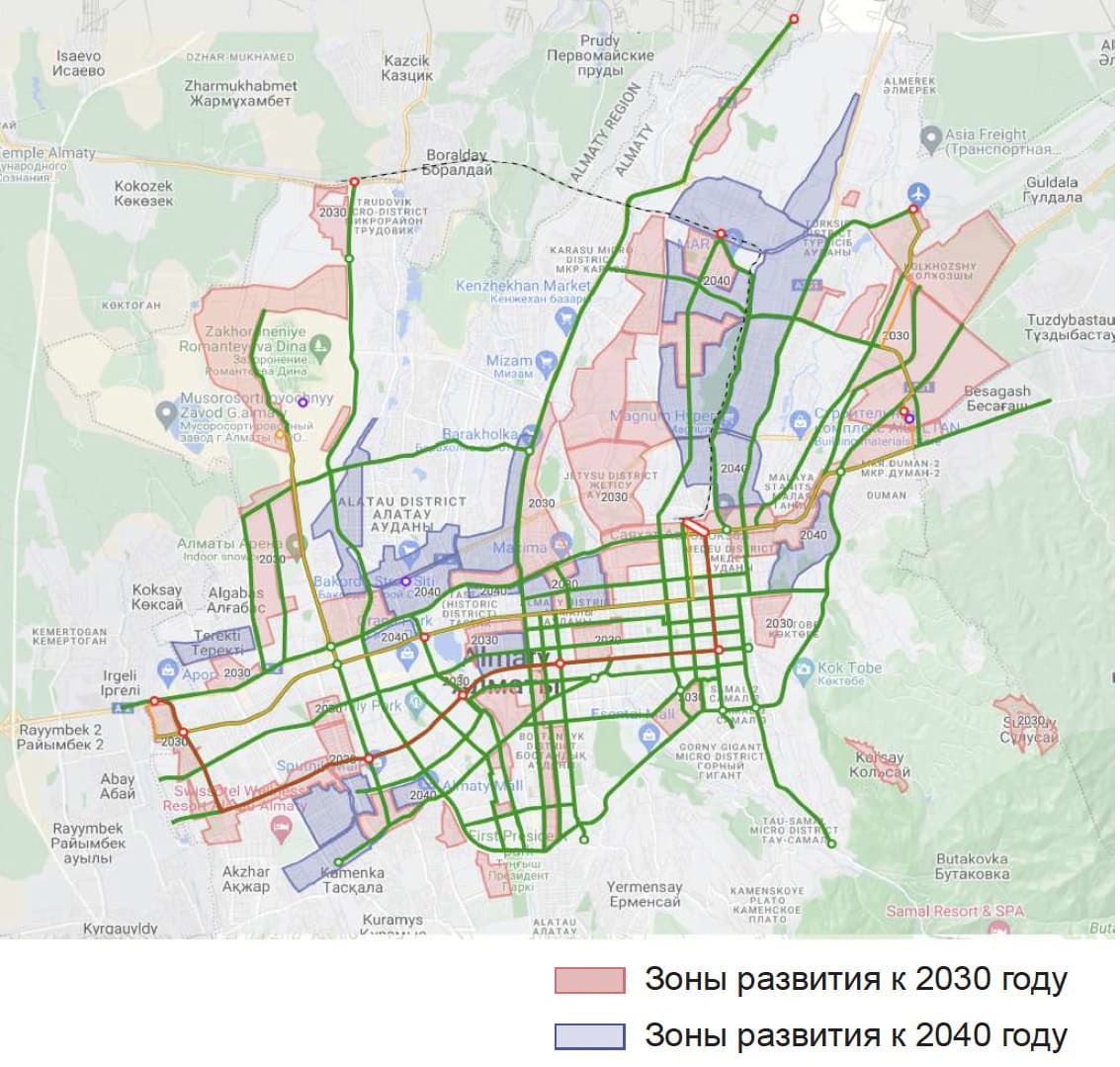Sustainable development has become a guiding principle for many metropolises, and Almaty is no exception. What technologies and initiatives from architects and urban planners can serve as examples for other cities in Central Asia? How do urban planning approaches help to address traffic congestion, optimize road infrastructure, and mitigate negative environmental impacts?

To explore these and other aspects of urban development, we spoke with Askhat Saduov, architect, urban planner, and head of the Scientific Research Institute "AlmatyGenPlan," who also participated in the Central Asian Urban Forum.
- How does Almaty handle the challenges of rapid urbanization while balancing modern development with the preservation of its historical architecture?
Let me start by clarifying terminology. We view urbanization primarily as the migration of rural populations into cities. Statistically speaking, this means examining how much of the rural population has become urban. In Almaty’s case, many rural areas have become part of the city through a doubling of its boundaries. However, this process creates challenges as areas with rural characteristics are assigned urban status, requiring urban-level infrastructure. We are witnessing "urban sprawl," a phenomenon we are now attempting to offset by developing a polycentric urban model.
If we consider urbanization in the broader sense, as Ildefons Cerdà, the "father of urbanism," described in his General Theory of Urbanization (1867), urbanization is the science and art of creating cities. It is crucial to focus on the quality of the urban environment rather than just the speed of urbanization. Cerdà's vision of blurring the lines between rural and urban areas remains relevant, guiding us toward creating comfortable urban spaces for all.
In the case of Almaty, our challenge is to urbanize rural territories in the Cerdà sense, while activating other free areas to create a polycentric system of various urban centers. Almaty's daily migration flows amount to approximately 500,000 people, placing significant strain on the road network and exacerbating environmental concerns. Our goal is to "urbanize" not only the territories but also the population, encouraging the use of public transportation, a challenge all metropolises face as they shift toward urban mobility solutions.

In this context, the historical structure of the pre-automobile, human-scale city is highly relevant. For instance, the street grid in Almaty’s historical center manages traffic flows more efficiently and provides a more comfortable environment for pedestrians.
- What solutions are being implemented to improve Almaty’s urban ecology and reduce air pollution in the context of transport infrastructure growth?
Improving urban ecology and reducing air pollution require a comprehensive approach involving multiple solutions. A major contributor to Almaty’s pollution is automobile traffic, as the COVID-19 lockdowns demonstrated by significantly improving air quality. Today, one in four Almaty residents owns a private car. This growth in vehicle ownership brings challenges such as air pollution, traffic congestion, a lack of parking spaces, and rising fuel prices.
In addition, large polluters include the city’s thermal power plants (TPPs), which, while strategically important, have a notable environmental impact. Currently, Almaty is undertaking a feasibility study for the modernization of TPP-2 to minimize its environmental footprint. The plant is slated to fully transition to natural gas by the end of 2026.
Significant efforts are also being made to improve the city's transport infrastructure. Earlier this year, Almaty's master transport plan was approved, outlining the development of the city's transport framework until 2030. This plan is a strategic document aimed at enhancing Almaty’s transport infrastructure while promoting the principle of "a city for the people." Its main goal is to shift the population from private cars to public transport, to increase the number of trips made via public transport by 64% by 2030.
The city is also constructing infrastructure for public transport and planning to implement low-emission zones. The Bus Rapid Transit (BRT) project along Raimbek Avenue is one such initiative. Spanning 17 kilometres, this project includes not just the roadway, but surrounding sidewalks and residential areas, aiming to manage traffic flow on one of Almaty's major avenues.
- Will sustainable architecture projects help address these challenges?
Sustainable architecture is a costly but essential investment in the future of society. It is built on principles of environmental responsibility, aiming to minimize environmental impact and use resources wisely. In recent decades, the world has faced significant challenges due to climate change, and architects must now more than ever consider how their projects can contribute to environmental preservation.
Each new project is a step toward a more harmonious coexistence between humans and nature, where architecture plays an active role in addressing global issues. However, in a market economy, not all architectural developments are taken into account. Often, the interests of clients and financial constraints take precedence, forcing original ideas and concepts that could enrich the urban landscape to be sidelined.
- What challenges do you see in the process of reconstructing and redeveloping Almaty’s older neighbourhoods, and how can their unique atmosphere be preserved while adapting them to modern standards?
Many countries have mass housing districts, built to quickly and affordably accommodate growing urban populations. Today, these buildings and areas are in decline, having become outdated and in need of significant upgrades.
In Almaty, the first neighbourhoods built in the 1960s are now obsolete and require modernization. The main issues include a lack of cultural and sports facilities, green spaces, and public areas. The general plan calls for the revitalization of these districts, which will involve restoration and reconstruction, as well as public consultations to identify optimal solutions.
- What regional-level initiatives could enhance cooperation between Central Asian cities in addressing transportation infrastructure and urban mobility issues?
First, the establishment of intercity transport coordination committees involving representatives from various cities and countries would facilitate dialogue and allow for the development of joint strategies to improve transport infrastructure.
Second, collaborative investment projects could play a significant role. By creating joint funds to finance transport projects such as road and bridge construction or the development of public transport systems, cities could improve mobility and accessibility. Additionally, sharing experiences and best practices among cities would foster stronger regional cooperation.
- How can Kazakhstan and other countries in the region jointly address the challenges of climate change and its impact on urban development in Central Asia?
In April this year, five Central Asian countries—Kazakhstan, Uzbekistan, Kyrgyzstan, Tajikistan, and Turkmenistan—launched a joint initiative to monitor glaciers. Neighbouring countries will now share data and train specialists to observe frozen water resources, marking a significant step toward regional collaboration. Given the importance of water resources for urban areas, this kind of cooperation is crucial. Official data shows that 56% of Kazakhstan’s annual water flow is formed outside the country, making Kazakhstan heavily dependent on its neighbours for water resources.
Follow Daryo's official Instagram and Twitter pages to keep current on world news.
Comments (0)